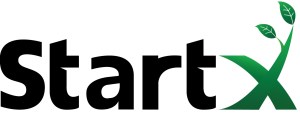JPMorgan Chase
& Co., the largest commercial bank in the U.S., generates a vast
amount of credit card information and other transactional data about
U.S. consumers. Several months ago, it began to combine that database,
which includes 1.5 billion pieces of information, with publicly
available economic statistics from the U.S. government. Then it used new
analytic capabilities to develop proprietary insights into consumer
trends, and sell those reports to the bank’s clients. The technology
allows the bank to break down the consumer market into smaller and more
narrowly identified groups of people, perhaps even single individuals.
And those new reports can be generated in seconds, instead of weeks or
months, JPMorgan Chase CIO Guy Chiarello told CIO Journal.
It’s an example of how the nation’s four large universal banks—JPMorgan Chase
Bank of America Corp.
Citigroup Inc.
and
Wells Fargo
& Co. — are beginning to make use of potentially powerful analytic
technology known as Big Data, which describes a broad set of hardware
and software and is designed to quickly process huge amounts of data,
including information like social media posts and email, which don’t fit
into conventional databases.

- John Moore/Getty Images
The software can help analyze internal bank records and correlate
them with other sources of information–to give banks a more accurate
picture of their customers, and a better ability to predict which
customers are likely and credit-worthy buyers of new financial products.
“Big Data is really the theme for 2013,” says Mr. Chiarello. He says
that Big Data-driven “digital marketing will become a significant
thing.” Currently, as with most large banks that have had to swallow
acquisitions that further muddled traditionally siloed banking
operations, JPMorgan Chase has a hard time aggregating all available
information about a single customer. Information about checking
accounts, mortgages and wealth management for the same individual were
contained in independent information management systems, preventing
banks from leveraging considerable analytic capabilities that could have
helped account representatives provide customers with better service.
Banks can also offer lower interest rates by using Big Data to reduce
credit card fraud, thus reducing their overhead, says Mr. Chiarello. “We
should be able to be a better credit bureau than the credit bureaus,”
he said.
This opportunity comes at a time when banks are under enormous margin
pressure thanks to a slack economy, and they have little room for extra
spending on technology. Whatever spending they’re doing on emerging
technology is coming from savings they’ve achieved by rationalizing
their technology operations. Their ambitions include the use of
real-time analytics, creating better mobile offerings, and further cost
reduction through the use of more sophisticated ATMs. The question is
whether they have enough to spend, and can create new products to create
incremental revenue and put the brakes on customer churn.
The four big universal banks, far and away the U.S.’s largest banks
with over one trillion dollars in assets, each spend approximately $7
billion to $10 billion annually on technology, according to Howard
Rubin, principal at bank technology advisory firm Rubin Worldwide. Mr.
Rubin would not discuss individual banks because many are clients of his
firm. The banks do not publicly discuss technology spending separately
from operations, in part because traditionally, spending on technology
has been up to individual business units. Market research firm Ovum
estimates that U.S. banks will spend $41.5 billion on technology in
2013.
Budget pressure notwithstanding, the big banks are moving into Big
Data. Jeff Harte, a bank analyst with Sander O’Neill, says lenders are
moving beyond traditional analysis of customers’ credit-worthiness and
“are analyzing the behavior of customers,” seeking answers to questions
such as whether they always eat dinner out or whether they offset
shopping at high-end department stores with trips to discount stores.
This information can be gleaned from credit and debit card statements as
well as from posts to social media sites. “It’s a step beyond analyzing
credit quality and towards analyzing the customers’ behavior,” he said.
Steve Ellis, executive vice president and group head of the Wells
Fargo Wholesale Services Group, says “the behavioral analysis stuff is
coming” in the next five years. He warns, however, that there’s still a
lot to understand for the banks to learn before they can “get to
one-to-one marketing. That’s the big promise, and that’s where
competitive advantage will be played out in lots of industries over the
next five years. And if you don’t figure it out, you’re not going to be
best in class.”
Catherine Bessant, who runs technology and operations at Bank of
America, says BoA used the analytic capabilities of Big Data to
understand why many of its commercial customers were defecting to
smaller banks. Until recently, it offered an end-to-end cash management
portal which, it learned thanks to its analytic capabilities, was too
rigid for its customers, who wanted the freedom to access ancillary cash
management services from other financial services firms. “We started to
get beat by smaller banks that could deliver more modular solutions,”
says Ms. Bessant. Bank of America used data gleaned from customer
behavior on its own website as well as from call center logs and
transcripts of one-on-one customer interviews to determine why it was
losing those customers. It dropped the all-in-one offering and launched a
more flexible online product, Cash Pro Online, in 2009, and a mobile
version, Cash Pro Mobile, in 2010, even though the previous product “had
been seen as a cash cow,” she says. All the development work had
already been done, which meant new business “went straight to the bottom
line.”
Citi, for its part, is experimenting with new ways of offering
commercial customers transactional data aggregated from its global
customer base, which clients can use to identify new trade patterns.
“New silk roads are being created, and we think this information could
show signs for which might be the next big cities in emerging markets,”
says Don Callahan, who manages internal operations and technology at
Citi. According to Mr. Callahan, the bank shared such information with a
large Spanish clothing company which it was able to use to determine
where to open a new manufacturing facility and several new stores.
The banks believe Big Data can help them grow revenue in a slack
market. Thomas Sanzone, a senior vice president at consulting firm Booz
Allen Hamilton who advises financial services firms, says Big Data
represents “a significant opportunity for cross-selling and customized
marketing because you have new technologies and techniques that give you
access to pools of data that used to be unreachable. That changes the
game and can create significant opportunities you didn’t have before.”
Banks executives also hope Big Data will help them use better
marketing techniques to address a big problem with customer churn. JP
Morgan Chase said in an investor’ day presentation in 2011 that it
expected between 50% and 60% of its customers to leave as a result of
new fees on checking accounts.
But first the banks must find room in the budgets to fund these
initiatives. In many instances, investments in innovation are being
funded by savings accomplished through rationalizing systems and
automating processes.
Citi, which announced a large reorganization in December, with
approximately a quarter of the savings coming from its operations and
technology unit, reduced overall spending in O&T by more than $4
billion over five years, according to Mr. Callahan.
Kevin Rhein, senior executive vice president of technology and
operations at Wells Fargo & Co., says the bank has largely completed
the work of integrating scores of different systems, and almost two
years ago began the work of moving “to the next stage of technology and
operations.” For the three previous years, “we spent a lot of money on
integration, and there’s a lot of pent-up demand [for technology
services] as a result of that. He said approximately 80% of the
company’s technology spending is now on new services and capabilities
requested by the business units. Still, he said, “I think we are
under-investing” in technology. “I’d like to be investing more,” he said
during an on-stage Q&A with the Wall Street Journal at a CIO event
sponsored by consulting firm
Gartner Inc.
Mr. Chiarello said JP Morgan is plowing savings from having
consolidated technology units into new initiatives around technology.
But “net spend is flat from 2007,” he said. “And that’s with more
investment in innovation.”
Mr. Harte of Sander O’Neill says JP Morgan and Wells Fargo are some
12 to 18 months ahead of Citigroup and Bank of America in terms of
folding in the systems of merged banks, giving them a lead in the
innovation race, but that the latter are catching up quickly. “The ones
who got through the crisis in better shape had a head start of around
six to eight months, but the others are closing ground quickly,” he
said.
Bank of America has been able to shift the bulk of technology
spending from activities around consolidation to investing in more
innovative technologies, such as Big Data. But Ms. Bessant says the
banks also must make cultural adaptations if they hope to make a good
return on these types of investment. The leaders of those large
institutions must be willing to absorb unwelcome news—such as accepting
that customers are unhappy about a particular service, and why — and
change as a result.
The promise of Big Data is “the manufacturing of brilliant data and
making brilliant use of it, and we have a drive for abject purity in
listening,” she said.
By Michael Hickins
Source:
Wall Street Journal

















